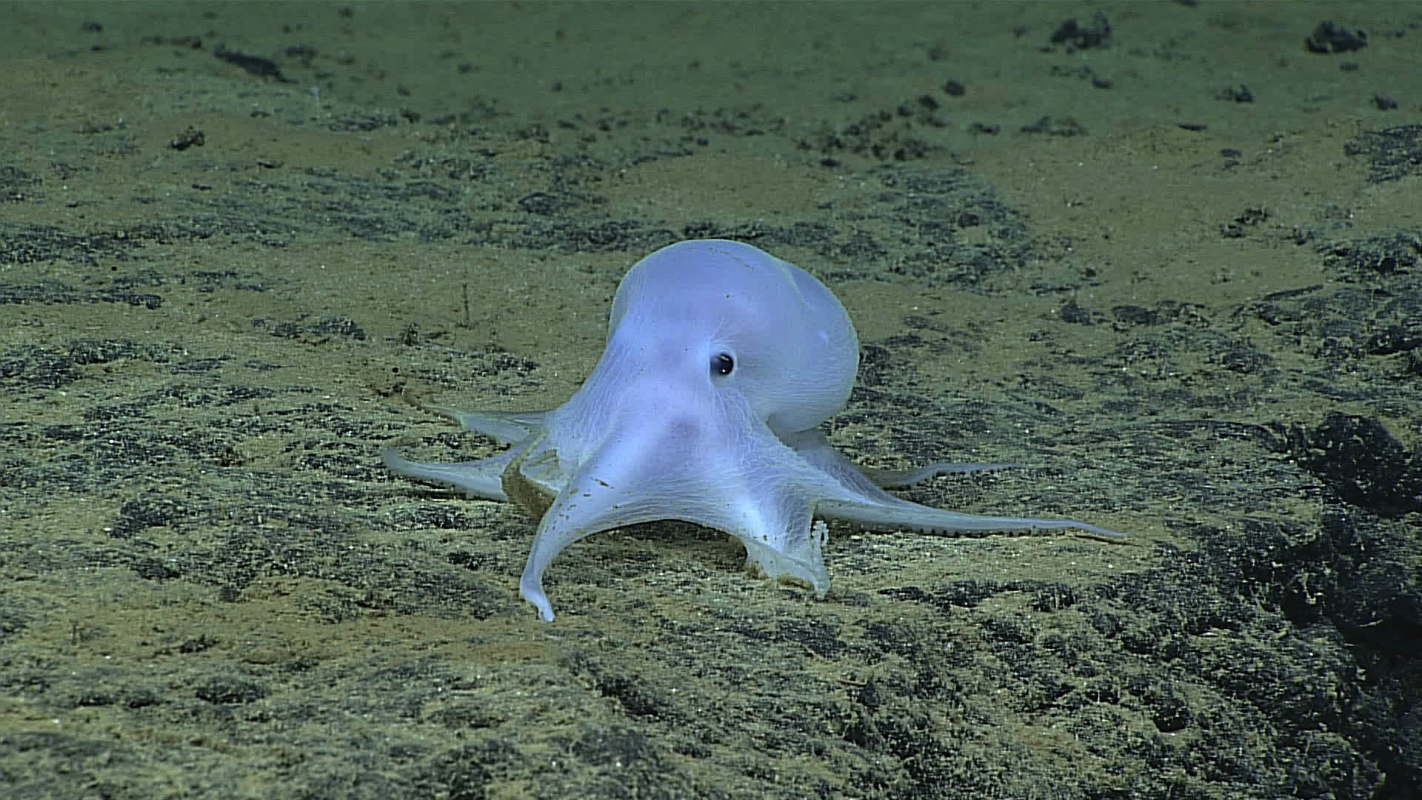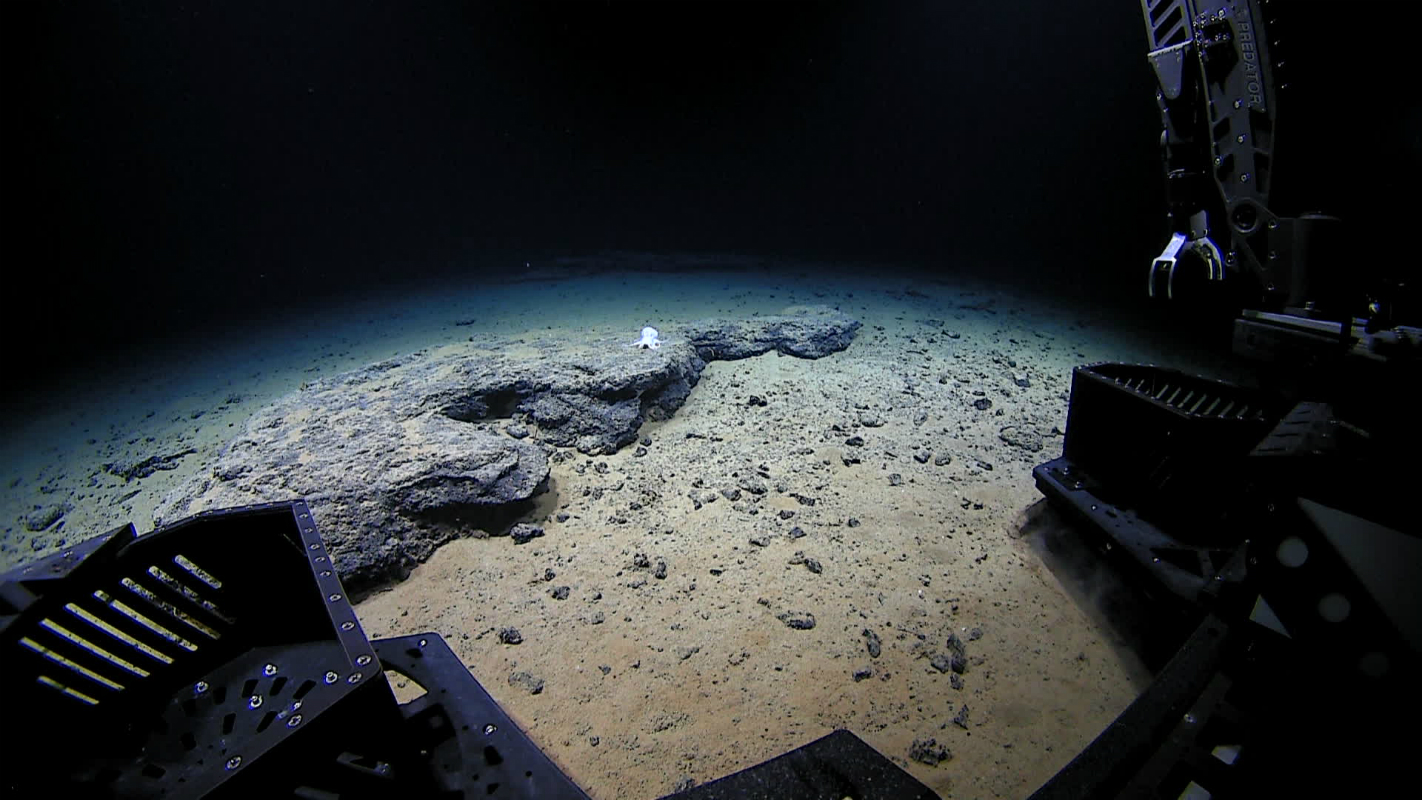Ghostly Octopod Haunts Deep-Sea Exploration Mission

The recent deep-sea sighting of a highly unusual bluish-white octopod moved one of the mission scientists to paraphrase a Taylor Swift song, saying, "I have never, like, ever, seen that one."
Yes, it was that special.
The pearly-hued cephalopod was spotted Feb. 27 in waters near the Hawaiian Islands, captured on video by a robotic vehicle deployed by the Okeanos Explorer, the National Oceanic and Atmospheric Administration (NOAA) ship that conducts ocean exploration around the world. [New 'Ghost-Like' Octopod - Scientists: 'Never Seen Anything Like This']
Deep Discoverer, Okeanos' remote-operated vehicle (ROV), was conducting the first dive of the 2016 season, about 2.5 miles (4,000 meters) below the surface.
What the mission scientists found on that dive was unexpected and striking. A peculiarly pale octopod — resembling an octopus but yet to be described — crouched on the ocean floor, apparently lacking the pigment cells, or chromatophores, usually associated with octopods. Its body also appeared to be less muscular than is usual for these animals, giving it an almost ethereal appearance that Michael Vecchione, a zoologist at the NOAA National Systematics Laboratory at the Smithsonian, and a curator of cephalopods at the National Museum of Natural History in Washington, D.C., described in a statement as "ghostlike."

"Beautiful image, here!"
Two scientists' astonished and delighted voices are audible on NOAA's octopod video — Daniel Wagner, a research specialist with the NOAA Papahānaumokuākea Marine National Monument, and Chris Kelley of the Hawaii Undersea Research Laboratory at the University of Hawaii. Wagner exclaimed that the creature was "different than the two we got on video last year," while Kelley chimes in to add, "That animal is not in the HURL guide!" referring to the Hawaii Undersea Research Laboratory's reference collection for identifying deep-water animal species.
Sign up for the Live Science daily newsletter now
Get the world’s most fascinating discoveries delivered straight to your inbox.
"We've never seen one like this at this kind of depth before," Vecchione told Live Science. Octopods with fins, the so-called "dumbo" octopods, are common at this depth, he said, but this ghostly, finless creature belonged to the incirrate octopod group, which lacks fins and is typically found in shallower waters.
Vecchione said he knew of one other type of octopod without pigment cells, but he noted that this new animal revealed a different number of sucker rows on its arms than the known species — one row instead of two. "So that's why I'm pretty sure that it has to be an undescribed species, and maybe an undescribed genus," he said.
But while the prospect of finding a new ocean species is certainly exciting, it's also just not that unusual, Vecchione added. The ocean is deep and vast, with much of the deep sea yet to be explored and likely holding many unknown forms of life.
"Frankly, undescribed species in the deep sea are a dime a dozen," he told Live Science. "We know so little about what lives down there."
Follow Mindy Weisberger on Twitter and Google+. Follow us @livescience, Facebook & Google+. Original article on Live Science.

Mindy Weisberger is an editor at Scholastic and a former Live Science channel editor and senior writer. She has reported on general science, covering climate change, paleontology, biology and space. Mindy studied film at Columbia University; prior to Live Science she produced, wrote and directed media for the American Museum of Natural History in New York City. Her videos about dinosaurs, astrophysics, biodiversity and evolution appear in museums and science centers worldwide, earning awards such as the CINE Golden Eagle and the Communicator Award of Excellence. Her writing has also appeared in Scientific American, The Washington Post and How It Works Magazine. Her book "Rise of the Zombie Bugs: The Surprising Science of Parasitic Mind Control" will be published in spring 2025 by Johns Hopkins University Press.










